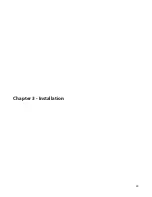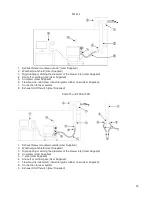
2. The Owner of the Class 4 laser system will be responsible for creation of a controlled area in which a
Class 4 laser system will be operated. A controlled area is an area designed to fully contain the laser
radiation potentially escaping from a Class 4 laser system. and with measures in place to prevent
unauthorized personnel from entering the area including lighted warning signs outside the designated and
controlled area and interlocks on entryways.
3. The LSO will be responsible for designating and training all personnel authorized to operate, maintain or
service a Class 4 laser system. It will also be the responsibility of the LSO to take measures to inform and
restrict all unauthorized personnel from access to a Class 4 laser system.
4. The Owner of the Class 4 laser system will be responsible for identifying and providing to all authorized
personnel any protective equipment such as specially designed eyewear, protective equipment and
clothing needed when operating, maintaining or servicing a Class 4 laser system. Further, the Owner will
ensure that no juveniles operate the laser, and that mirrors, lenses and other reflecting materials are fixed
and are only moved in a controlled manner if the last is in use.
5. The LSO will be responsible for auditing all safety measures on a regular basis. This includes regular
retraining of authorized personnel, serialization and regular inspection (and replacement when necessary)
of all special eyewear and clothing and regular inspection of all safety measures surrounding the
controlled area in which a Class 4 laser system is operated. The LSO may be required to maintain
records as necessary to prove compliance.
6. The LSO will be responsible for regular medical surveillance of all authorized personnel operating a Class
4 laser system. This can include but is not restricted to mandatory annual eye exams, for example.
7. Class 4 lasers must not be used at tradeshows or exhibitions.
The above list is not to be considered all inclusive. Other mandatory safety measures may be applicable and will
vary from state to state and country to country
. It is the responsibility of the owners of a Class 4 laser system
and the owners of the facility in which it will be operated to identify and comply with all regulations
pertinent to their locale.
In some states, for example, anyone wishing to operate a Class 4 laser device must
register with the state radiation regulatory agency, pay annual fees and submit to annual inspections. There may
be penalties involved for non-compliance. The United States Occupational Safety and Health Administration
(“OSHA”) has also adopted rules for safe use of lasers in the workplace. The LSO must comply with all Rules and
Regulations set by law.
To reiterate, the safety measures relating to operation of a Class 4 laser system are mandatory under
Federal and State law in the United States as well as in most foreign countries.
This optional Class 4 laser
device must not be used if you are unable or unwilling to comply with all safety measures required for safe
operation of a Class 4 laser system.
13
Summary of Contents for PLS4.75
Page 1: ...PLS User Guide PLS4 75 PLS6 75 PLS6 150D PLS6MW www ulsinc com Revision August 2012...
Page 5: ...Chapter 1 Specifications 5...
Page 8: ...Chapter 2 Safety 8...
Page 14: ...Tamper Proof Labels Safety Labels...
Page 15: ...ULS Fiber Laser Cartridge Labels 15...
Page 16: ......
Page 17: ...PLS4 Back View 17...
Page 18: ...PLS6 Front View 18...
Page 19: ......
Page 22: ...Chapter 3 Installation 22...
Page 40: ......
Page 48: ...Chapter 4 Operation 48...
Page 83: ...Chapter 5 Accessories 83...
Page 99: ...Example Connection for PNP mode Example Connection for NPN mode 99...
Page 111: ...Chapter 6 Maintenance 111...
Page 119: ...www ulsinc com...














































